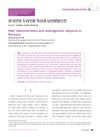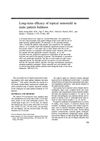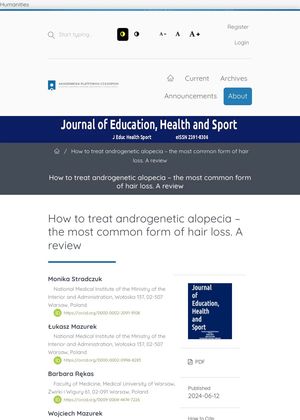TLDR Androgenetic alopecia can be treated with minoxidil and finasteride, requiring long-term use and patient cooperation.
This review covers treatment options for androgenetic alopecia (AGA), which affects up to 80% of men by age 70 and 40% of postmenopausal women. AGA is influenced by genetics, age, and androgens like dihydrotestosterone (DHT). FDA-approved treatments include topical minoxidil, which improves blood flow to hair follicles, and oral finasteride, which inhibits the conversion of testosterone to DHT. The review also notes the increasing use of topical minoxidil and finasteride and highlights new emerging treatments. Long-term treatment and patient cooperation are crucial for optimal results and minimizing side effects.
 8 citations
,
January 2013 in “Journal of The Korean Medical Association”
8 citations
,
January 2013 in “Journal of The Korean Medical Association” Korean hair is typically thicker with a slower growth rate, and treatments like Dutasteride are effective for male pattern hair loss without major side effects.
 January 2013 in “Journal of The Korean Medical Association”
January 2013 in “Journal of The Korean Medical Association” The document's conclusion cannot be provided because the text is in Korean and cannot be parsed.
April 2011 in “The FASEB Journal” Topical Minoxidil is cost-effective for managing baldness but requires continuous use.
 88 citations
,
February 2011 in “Journal of Dermatological Science”
88 citations
,
February 2011 in “Journal of Dermatological Science” Minoxidil helps hair growth by activating the β-catenin pathway.
September 1989 in “Drug and Therapeutics Bulletin” Topical minoxidil is not very effective for baldness.
 41 citations
,
March 1987 in “Journal of The American Academy of Dermatology”
41 citations
,
March 1987 in “Journal of The American Academy of Dermatology” Topical minoxidil effectively treats male pattern baldness and prevents hair loss.
 58 citations
,
July 1986 in “Journal of The American Academy of Dermatology”
58 citations
,
July 1986 in “Journal of The American Academy of Dermatology” Lowest effective minoxidil concentration is 1%, but 2% works better for male pattern baldness.






